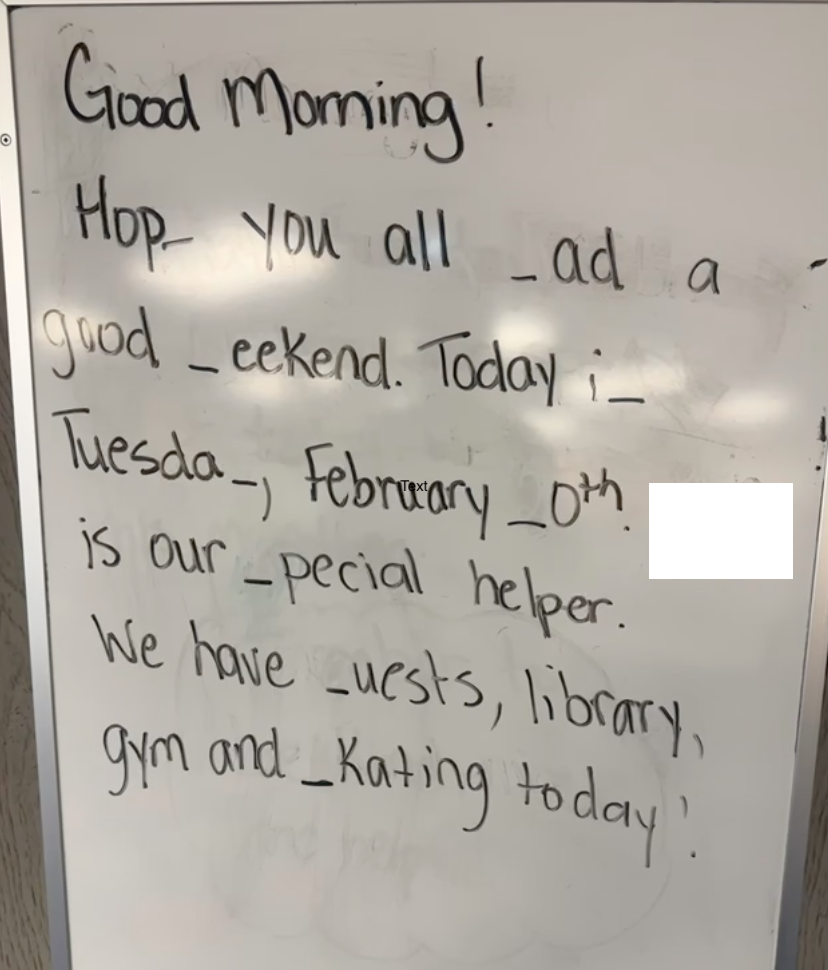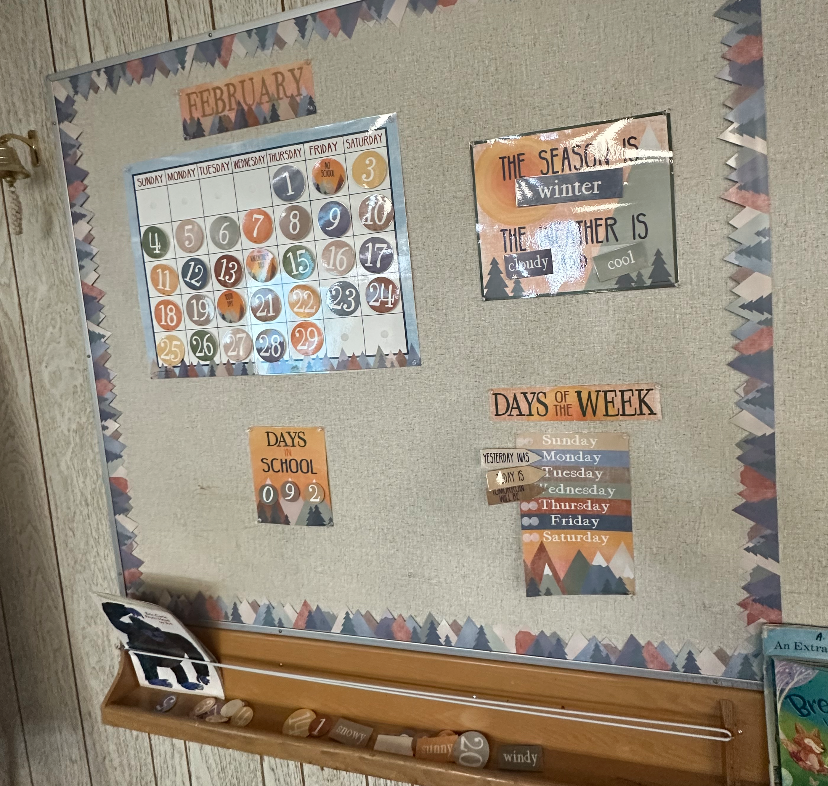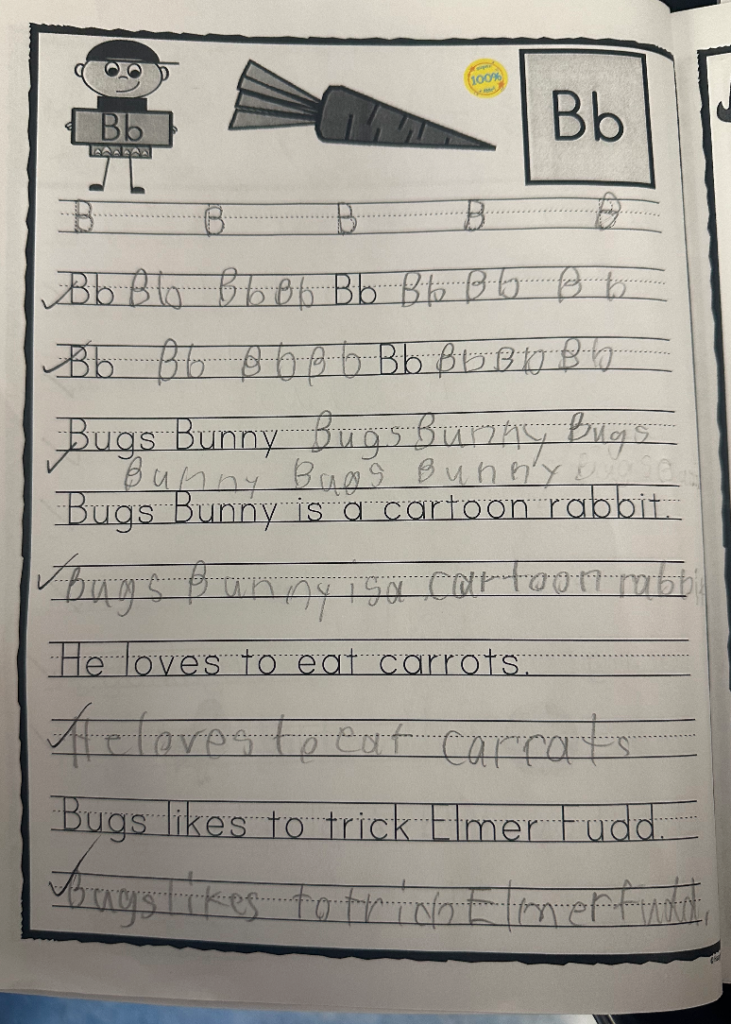Today is the 100th day of school at G.T! I had the opportunity to observe and help in a grade two class over the past three weeks. I am so fortunate to have had this opportunity to gather resources and lesson ideas to support students reading and writing skills. Below is detailed connections to the BC Curriculum, the lesson details and my reflection in relation to the professional standards for BC educators.
Connections to the BC Curriculum
Grade: 2
Subject: English Language Arts (ELA) + Arts Education + Mathematics
ELA Big idea: “Using language in creative and playful ways helps
us understand how language works” (BC Curriculum, 2024).
Mathematics Big idea: “Development of computational fluency in addition and subtraction with numbers to 100 requires an understanding of place value” (BC Curriculum, 2024).
ELA Curricular Competencies:
- “Read fluently at grade level” (BC Curriculum, 2024).
- “Engage actively as listeners, viewers, and readers as appropriate, to develop understanding of self, identity, and community” (BC Curriculum, 2024).
- “Exchange ideas and perspectives to build shared understanding” (BC Curriculum, 2024).
- “Communicate using sentences and most conventions of Canadian spelling, grammar, and punctuation” (BC Curriculum, 2024).
Mathematics Curricular Competencies:
- “Use mathematical vocabulary and language to contribute to mathematical discussions” (BC Curriculum, 2024).
- “Explain and justify mathematical ideas and decisions” (BC Curriculum, 2024).
ELA Content:
- “Reading Strategies”- ie “using knowledge of language patterns and phonics to decode words” (BC Curriculum).
- “Oral language Strategies” – ie “asking questions to clarify, expressing opinions, speaking with expression and taking turns” (BC Curriculum, 2024).
- “Writing Processes”- ie “revising and editing” (BC Curriculum, 2024).
- “Letter Formation” (BC Curriculum, 2024).
- “Conventions” (BC Curriculum, 2024).
Mathematics Content:
- “Addition and subtraction to 100” (BC Curriculum, 2024).
- “Financial literacy” (BC Curriculum, 2024).
Cross-Curricular Connections:
- Mathematics: This activity connects particularly well to the mathematics curriculum because in their morning work the students are asked a financial literacy question, addition/subtraction questions, and to write a number in expanded form.
- Arts Education: When students completed working on their printing booklets they were given a colouring sheet to complete for 100s day! This connects to visual arts in the BC Curriculum.
Connections to FPPL: During this lesson, it was very evident that “Learning involves patience and time” (FPPL, 2024). The reason I say this is because the teacher continually reiterated to the students to take their time to work on their printing books and to do the best possible job they can. Students would be asked to redo parts of their printing book that were not done to the best of their ability. This shows how learning takes patience (it may take multiple tries and that is ok) and time (it takes time to edit and revise work).
Lesson Details
- Students were welcomed into the class with a soft start to do their morning work.

This is a photo of the morning work for the day. I loved how morning work gave students time to settle in and warm up their minds in the morning. It is also wonderful that it is cross-curricular.
2. The teacher then has students mark their own morning work by filling it in at the front of the classroom under the projector. This is great because then students know areas they need to work on and if they arrived late they still have a chance to work through the worksheet with the support of the teacher.
3. Student were asked to gather around the carpet for morning meeting!

This is the morning meeting board. Each day the teacher writes a message to the students about activities going on that day and who the special helper is.
4. Complete a class read through of the morning meeting board.
5. Students fill in the blanks. The students are chosen by the special helper of the day.
6. Next is calendar time which is led by the special helper of the day. Below is a photo of the calendar time setup. The shelf at the bottom of the photo has all of the velcro/laminated pieces.

7. The special helper starts by finding the date on the calendar.
8. Next, students update the number of days in school.
9. Next is the season and weather. The season is: ________ (winter) and the weather is: ________ (cloudy and snowy).
10. Lastly, the special helper updates the days of the week by pointing the arrows at the following: Yesterday was _____ (Monday). Today is: ______ (Tuesday). Tomorrow is: _______ (Wednesday). Then the whole class sings the song “Days of the Week” from the Adams Family. Below is a video of this. The students LOVED singing this song and I can’t wait to use this in the future!
11. The teacher went through the schedule for the day and answered any of the students questions before proceeding with the day.
12. Next, was a mini lesson on printing! The teacher pulled out the students printing booklets and asked them to work on the letter B of the package (2 pages). Within this booklet students had to focus on printing legibly and using the proper punctuation. I really loved how the teacher explained how to use the printing lines. How she explained it is the top line is the roof of a house, the middle dotted line was a window in the house, and the bottom line was the basement. To begin she modelled how to do the first few lines. Students followed along by drawing the letters in the air with their hands. Below is a photo of one students completed printing book for the letter B.

13. When students were finished their printing booklet they were allowed to begin working on their 100th day of school colouring page. As students were starting their colouring pages our time in the classroom was done.

************************************************************************************************************
Extra lesson idea! I want to share one more thing from last week’s lesson that I would love to include in my future teaching. The teacher pulled up a photo on the projector. The photo was of a playground with students playing on it. She asked the students to use the photo as inspiration to write a short story in their journals. She asked them to use the scene of the playground as either the beginning, middle, or end of the story and develop it further. I was really surprised at the wonderful and engaging stories students created in a very short amount of time.
For me, having the opportunity to observe these lessons and work with the students is such a rich learning opportunity! I am grateful for the tips and lesson ideas I have received so far and cannot wait to see what else I learn in the next few weeks.
Reflection: Related to the Professional Standards for BC Educators
Standard #1: Educators value the success of all students. Educators care for students and act in their best interest: During this lesson I was asked to work with a group of students to support them in the lesson activities. I was excited to involved in the lesson and to be able to contribute to the students success. When I arrived I had one student who initially did not participated. After noticing this I began speaking with the student to start building a relationship and trust with them. After about thirty minutes the student opened up to me stating “I can’t learn when I am in pain”. I asked the student if they would share with me what was causing them pain and they explained that their tooth was very loose and bleeding. From this information I said to the student, lets go for a little walk and get a drink. The cold water will feel soothing on your tooth. We did just that and the student kindly said thank you and begin working on his printing book immediately. Although this is such a small glimpse into this students day I felt that I stopped and took a moment to act in the best interest of the student. It is amazing to see the power of student-teacher relationships and how they can positively impact the success of the students.
Standard #6: Educators demonstrate a broad knowledge base and an understanding of the areas they teach: Upon reflection of this lesson I felt I had the knowledge base to support students in their morning work, printing, and short story writing. When students asked questions such as: how do I answer this math question? (“Michelle has 5 cents in a jar and her friend put in one dollar. How much does Michelle have in total?”). I was able to show the student a strategy by using place value with financial literacy. The student had an “aha!” moment when she said… “So Michelle has one dollar and five cents!”. It is the little moments like this where students are sparked full of joy in the excitement of learning that I love being a part of!
What, So What, Now What?

Thanks for following along!
~Chelsea
References
Curriculum. (n.d.-a). https://curriculum.gov.bc.ca/
First peoples principles of learning. First Nations Education Steering Committee FNESC. (n.d.-b). https://www.fnesc.ca/first-peoples-principles-of-learning/
Professional standards for BC educators – gov.bc.ca. (n.d.-d). https://www2.gov.bc.ca/assets/gov/education/kindergarten-to-grade-12/teach/teacher-regulation/standards-for-educators/edu_standards.pdf
YouTube. (2017, March 3). Days of the week – adam’s family (dr. Jean). YouTube. https://www.youtube.com/watch?v=oKqAblcwFOA

Leave a Reply
You must be logged in to post a comment.